School of Education and African American Students at Miami University
Introduction
Text-to-speech Audio
McGuffey Hall is at the western edge of the Miami University campus in Oxford, Ohio on the corner of Spring Street and Campus Avenue. Built in 1909, the building houses the School of Education, Health and Society, formerly known as the School of Education and the Normal School. McGuffey contains classrooms, an auditorium, and a technology lab. McGuffey Hall is named after William Holmes McGuffey, famous for his McGuffey Readers, popular books for children that were used to teach reading and morals in schools in the 1830’s and for generations after. McGuffey Hall and the School of Education enrolled the first female students as well as the first African American students at the University. The School of Education attracted many Black students from the local area to the profession of teaching.
Images
McGuffey Hall as School of Education, 1910
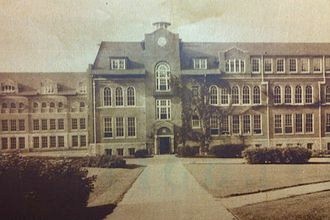
McGuffey creates unhealthy moral tone by excluding students, 1948
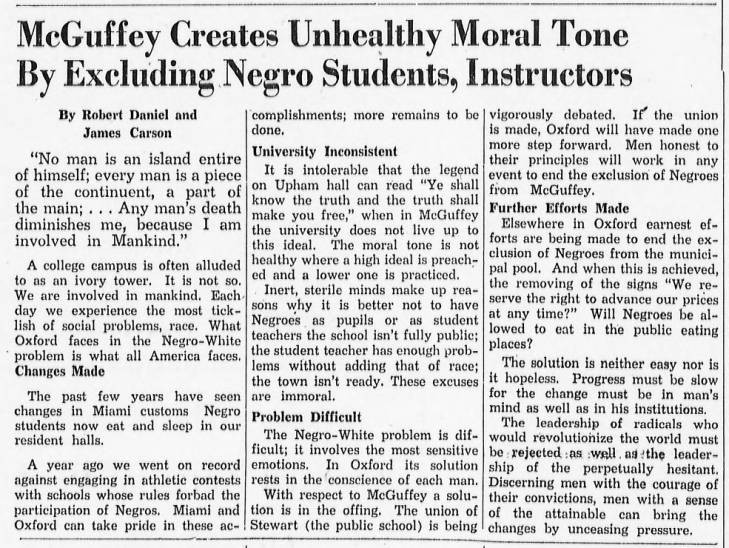
Nellie Craig, 1905
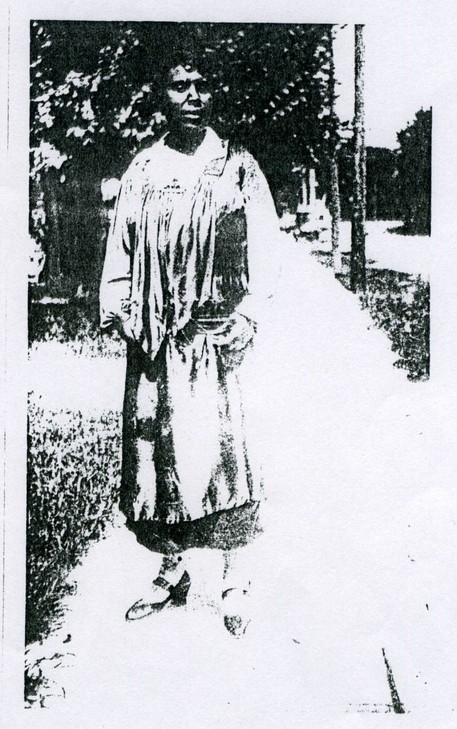
McGuffey Reader Illustration

Ohio State Normal School Class, 1904
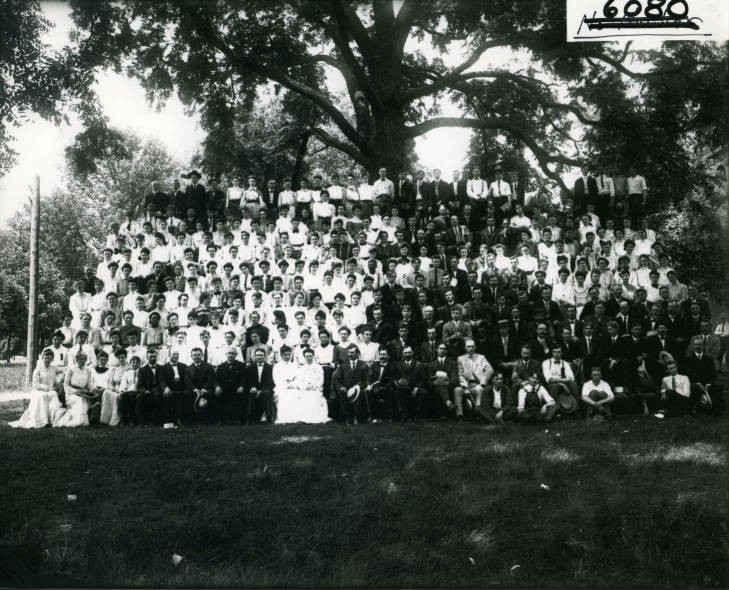
Nellie Craig Walker Hall
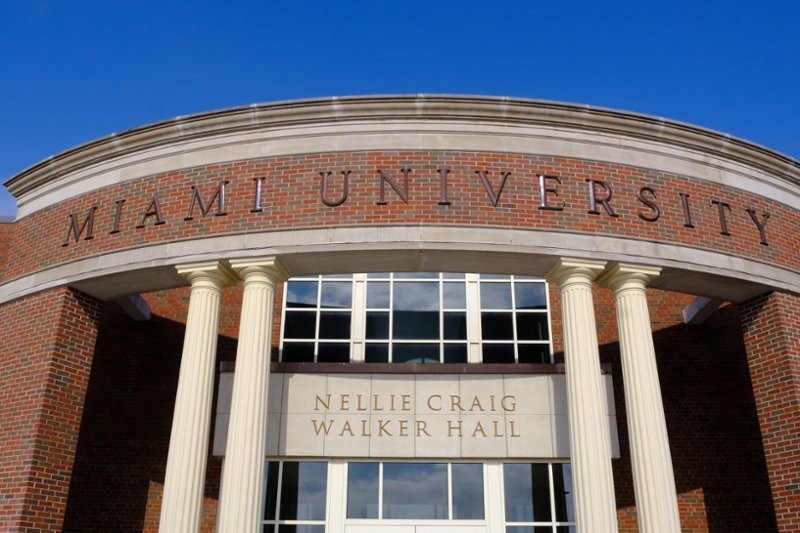
Backstory and Context
Text-to-speech Audio
Presently, McGuffey Hall is home to Miami University’s College of Education, Health, and Society. Formerly the Ohio State Normal School, it was founded in 1902 as Miami’s first professional school. The School experienced growth and success as time progressed. Starting with only 90 undergraduate students enrolled in 1903, there were at least 2,000 students enrolled by 1960. Then, in 1977, the School changed its name to the School of Education and Allied Professions to better represent the wide variety of academics offered by the institution. Throughout its existence, the School’s name was changed twice more to better fit its repertoire: The School of Education, Health and Society in 2007 and the College of Education, Health and Society as recently as 2013. Once referred to as a “practice school” or labatory, McGuffey Hall was home to Miami’s first teaching school. Here, “practice teachers” did their student teaching under the supervision of Miami faculty, allowing university students the opportunity to absorb a first-hand experience of educating youth. Local Black students were first admitted to McGuffey School in 1965.
Throughout the School of Education’s history, there have been numerous defining moments that signify the racial and social progression on Miami’s campus. The School of Education professionalized public school teaching, paving the way for certain key figures. Nellie Craig, Miami’s first African American student, graduated with a two-year teaching degree in the class of 1905. The School of Education also enrolled the first two female students at Miami. The School of Education also enrolled Earl Thomas Kelley, the second African American student to graduate from Miami in 1910. He later married the daughter of Peter Bruner, a beloved African American figure at Miami and former slave.
McGuffey Hall and the School of Education’s importance extend past what is offered in the curriculum. The School of Education was the first to accept female and African American students at the university and proved to be an inspiration for other Black students to attend. African American students attended the School of Education because of a desire to learn and spread their knowledge to others in their communities. Early African American graduates were important for educating Black children as White public schools would not admit Black children. Education, especially upper education, was often segregated and even after Brown vs. Board of Education many African Americans were denied access to universities because of their skin color.
The decision to admit Nellie Craig, the first Black graduate of Miami University, required correspondence between the President of the University and the Admissions Officer for approval and was a topic of debate for the community at Miami. Not only was she the first Black graduate from Miami, but Craig became one of the first Black educators in the Oxford school district, according to Miami University’s Vice President for Institutional Diversity, Anthony James. Craig’s admission set a precedent for the admission of other Black students such as Earl Thomas Kelley. Craig’s legacy at the School of Education lives on at Miami University. The University recently renamed the Campus Avenue Building, which housed the Campus Services Center, to Nellie Craig Walker Hall in September of 2020.
Sources
- https://miamioh.edu/ehs/about/technology/facilities/index.html
- https://www.britannica.com/biography/William-Holmes-McGuffey
- https://www.britannica.com/topic/McGuffey-Readers
- https://www.miamioh.edu/ehs/about/history/index.html
- Anderson, J. D., & Span, C. M. (2016). The Legacy of Slavery, Racism, and Contemporary Black Activism on Campus. History of Education Quarterly, 56(4). doi:10.1111/hoeq.2016.56.issue-4
- Randolph, A. W. (2014). African-American Education History—A Manifestation of Faith. History of Education Quarterly, 54(1). doi:10.1111/hoeq.2014.54.issue-1
- https://digital.lib.miamioh.edu/digital/collection/afamhist/id/126/rec/2
- https://digital.lib.miamioh.edu/digital/collection/afamhist/id/127/rec/2
- https://www.miamioh.edu/news/top-stories/2020/09/nellie-craig.html
Miami University Archives
The Miami Student
Miami University Archives
Frank Snyder Photograph Collection, Miami University Archives
Frank Snyder Photograph Collection, Miami University Archives
Miami University
